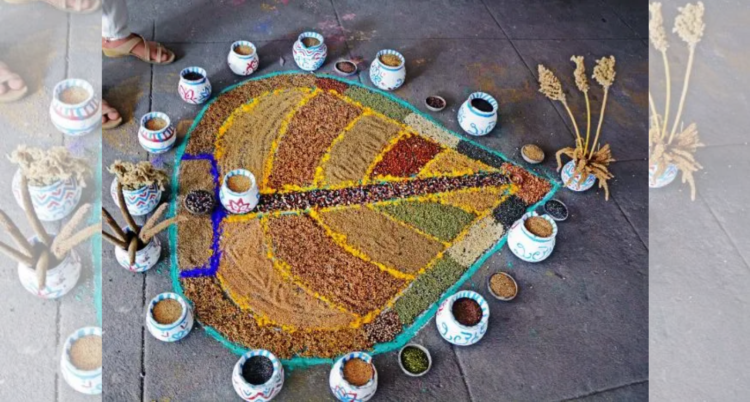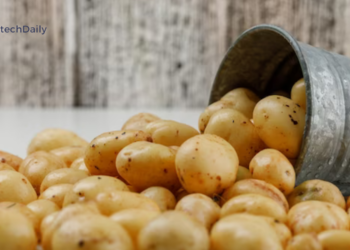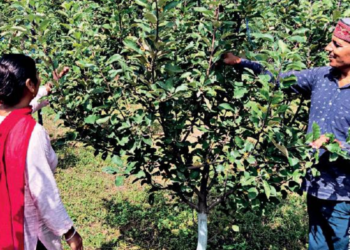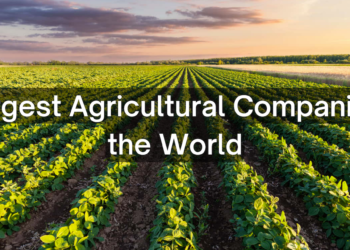India, a land known for its diverse cultural heritage and rich agricultural history, has always valued traditional crops. Among these, millets have held a special place as a significant staple food for centuries. Despite their nutritional benefits and versatility, millets have often been overshadowed by other major grains. However, with the increasing global interest in healthy and sustainable diets, millets are once again garnering attention, and India is emerging as the Shree Anna (the mother of all grains) hub.
This article delves into the reasons behind India’s growing prominence in millet production, the government’s efforts to promote these nutritious crops, and the potential they hold for a promising future.
The Resurgence of Millets in India

Millets are a diverse group of small-seeded, drought-resistant cereal crops that are grown for their edible seeds. They have played a vital role in India’s agrarian history, offering sustenance to millions and adapting to various climatic conditions. For centuries, millets have been consumed in various forms, from rotis and porridge to savoury dishes and beverages.
However, in recent decades, the consumption of millet declined due to the advent of modern farming practices and the promotion of high-yielding rice and wheat varieties. The shift towards these dominant crops led to a decline in millet cultivation, resulting in the loss of traditional knowledge and biodiversity associated with millets.
Fortunately, the tables have turned, and millets are experiencing a resurgence in India. The revival is attributed to multiple factors, including the rising interest in health and wellness. As people become more health-conscious, there is a growing demand for nutritious and sustainable food options. Millets, with their high nutritional content and environmental benefits, perfectly fit the bill.
Millets in the Indian Agricultural Landscape
India’s diverse agro-climatic conditions make it well-suited for growing a variety of millets. Some of the common millet types cultivated in the country include:
- Foxtail Millet (Kangni): This millet is rich in iron and minerals, making it an excellent dietary option.
- Pearl Millet (Bajra): Known for its drought resistance, pearl millet is a staple crop in arid regions of India.
- Finger Millet (Ragi): Finger millet is a storehouse of calcium and is widely consumed in various forms, including malt and dosa.
- Little Millet (Kutki): Little millet is a minor millet crop that is becoming increasingly popular due to its nutty flavour and nutritional benefits.
- Barnyard Millet (Sanwa): Often used during fasting, barnyard millet is easy to digest and contains high-quality protein.
- Kodo Millet (Kodra): Kodo millet is known for its resistance to pests and diseases, making it a resilient crop.
India’s ascent as the Shree Anna hub is further supported by various success stories from different states. For instance, in Karnataka and Telangana, efforts are being made to include nutrient-rich smaller millets in the mid-day meal schemes in government and government-aided schools. This not only ensures better nutrition for children but also promotes millet consumption among the younger generation.
Additionally, millet awareness is catching up rapidly in urban centres like Kolkata, Mumbai, Delhi, and others. As urban consumers become more conscious of their health and the environment, they are embracing millet as a healthier and more sustainable alternative to conventional grains.
Government Initiatives to Promote Millets
Recognizing the potential of millets and their role in ensuring food security, the Indian government has taken significant steps to promote their cultivation, consumption, and export.
- Millets in Public Policy: In 2018, the Indian government declared millets as “Nutri-Cereals,” acknowledging their exceptional nutritional value and health benefits. This move aimed to encourage the inclusion of millets in various welfare schemes and government-run food programs, such as the Public Distribution System (PDS).
- National Year of Millets: In the same year, 2018, India observed the “National Year of Millets.” This nationwide campaign created awareness about the importance of millets and their positive impact on health and agriculture.
- International Recognition: India’s efforts to promote millets gained international recognition when the United Nations General Assembly adopted an India-sponsored resolution designating 2023 as the “International Year of Millets.” This global acknowledgment further solidified India’s position as a frontrunner in millet cultivation and promotion.
- Millet Mission: Under the National Food Security Mission (NFSM), the government launched the Millet Mission to support millet farmers and promote sustainable agriculture. The mission focuses on empowering farmers through collectives, encouraging farm-gate processing, and emphasizing value-addition and aggregation of millet produce.
- Research and Development: The government, along with various research institutions and non-governmental organizations, is investing in research and development activities to enhance millet production, processing, and value addition. This includes the development of climate-resilient millet varieties and improved farming practices.
India’s Exports and Global Recognition

India’s remarkable efforts in promoting millet have yielded impressive results, leading to a significant increase in millet exports. In 2021, India exported millets worth USD 64 million, a substantial achievement compared to the previous years when the export mark had not reached USD 30 million in 2019 and 2020.
India’s importance in the global millet landscape is evident from its position as the producer of 20 per cent of the world’s millet and a staggering 80 per cent contributor to Asia’s millet production. This substantial contribution further solidifies India’s role as a key player in the millet industry.
Recognizing the immense potential of millet, India also proposed that the United Nations declare an international year of millet. This proposal from India, conveyed through APEDA, seeks to raise awareness about millets’ nutritional benefits and sustainability on a global scale.
Recently, the vibrant city of New Delhi hosted the Global Millets Conference, a significant event aimed at further promoting and developing the global millet market. The conference witnessed active participation, with approximately 100 Indian millet exhibitors and around 100 international buyers from various countries around the world.
The Global Millets Conference provided an excellent platform for showcasing India’s rich diversity of millets and their immense potential as nutritious and sustainable food options. With Indian millet exhibitors presenting their products and innovations, the event showcased the country’s commitment to promoting millet on the global stage.
The presence of international buyers from different corners of the world reflected the growing interest in millet and its rising demand in international markets. This exchange of ideas and business interactions during the conference undoubtedly contributed to enhancing millet trade opportunities and forging valuable partnerships between Indian millet producers and global buyers.
By organizing such a conference, India demonstrated its strong commitment to fostering millet cultivation, consumption, and trade at both the domestic and global levels. The Global Millets Conference served as a testament to India’s growing prominence as the Shree Anna hub and its role in leading the way towards a promising future for millets. The event’s success further solidifies India’s position as a key player in the global millet market and reaffirms its dedication to promoting millets’ significant nutritional and environmental benefits worldwide.
Challenges and the Path Forward
While the resurgence of millets in India is encouraging, there are challenges that need to be addressed for sustained growth. Some of the key challenges include:
- Supply Chain Infrastructure: Strengthening the supply chain infrastructure for millets, including storage, processing, and distribution facilities, is crucial to ensure that farmers get fair prices for their produce and that consumers have easy access to millet products.
- Market Linkages: Establishing better market linkages is essential to bridge the gap between millet producers and consumers. Creating demand for millet products in urban centres can incentivise farmers to cultivate millets on a larger scale.
- Policy Support: Continued policy support from the government is vital to encourage millet cultivation and consumption. This includes providing financial incentives, research funding, and policy measures to promote millets.
- Consumer Awareness: Educating consumers about the nutritional benefits of millet and debunking any misconceptions will play a significant role in increasing millet consumption.
Conclusion

India’s ascent as the Shree Anna hub holds great promise for the future of millets in the country and beyond. With the government’s proactive efforts, growing consumer awareness, international recognition, and events like the Global Millets Conference, millets are poised to regain their rightful place in the Indian agricultural landscape and global food markets.
The sustainable and nutritious nature of millet aligns perfectly with the changing food preferences and environmental concerns of the modern world. As India leads the way in promoting millet cultivation, consumption, and export, these achievements and initiatives herald a brighter and healthier future for generations to come. With millets taking centre stage in India’s agricultural and trade policies, the country’s journey as the Shree Anna hub continues to inspire and pave the way for a promising future for these remarkable grains.













